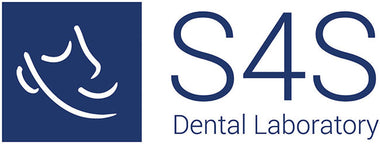TMD TREATMENT: HOW TO HELP YOUR PATIENTS
Temporomandibular Disorder (TMD) can significantly impact a patient’s quality of life, causing pain and discomfort that affects everyday activities like speaking and eating. As a dental professional, identifying and managing TMD effectively is crucial.
While there are several TMD treatment options available, one particularly effective solution in the SCi (Sleep Clench Inhibitor).
In this article, we’ll cover what TMD is, its symptoms, typical treatments (such as nightguards), and how the SCi can help your patients find relief.
What is TMD?
TMD refers to conditions affecting the temporomandibular joint (TMJ), which connects the jaw to the skull. This joint is responsible for critical movements like chewing, speaking, and yawning.
When the TMJ or surrounding muscles are strained, inflamed, or misaligned, it can lead to TMD.
The condition can be acute or chronic, and the severity often varies depending on the underlying causes.
What causes TMD?
TMD can arise from a combination of physical, and lifestyle factors. Understanding the root causes can help with providing effective TMD treatment.
Bruxism (teeth grinding or clenching)
Bruxism, the involuntary clenching or grinding of teeth, is one of the leading causes of TMD. It often occurs during sleep, making it difficult for patients to recognise without professional evaluation. The excessive force from grinding places immense stress on the TMJ and the surrounding muscles. Bruxism is often linked to stress, sleep disorders, or certain medications, and it’s a primary focus in managing TMD.
Jaw Misalignment
When the upper and lower teeth don’t align properly (a condition known as malocclusion), the TMJ needs to work harder to compensate. This creates uneven pressure across the joint, leading to strain and discomfort. Over time, this imbalance can exacerbate wear on the joint and result in chronic pain.
Injury or trauma to the face or jaw
Physical injuries, such as a blow to the face or jaw, can directly damage the TMJ or the surrounding ligaments or muscles. Even after the initial trauma has healed, patients may develop chronic TMD symptoms if the joint’s function is compromised or if scar tissue forms.
Stress and muscle tension
Patients often unconsciously clench their jaw or tighten facial muscles during periods of stress or anxiety, leading to overuse and fatigue of the TMJ.
Habits and posture
Certain repetitive habits, such as gum chewing excessively or biting nails, can strain the TMJ over time. Poor posture, particularly when the head is held forward (as seen with prolonged phone or computer use), places additional stress on the neck and jaw muscles.

Symptoms of TMD
Patients with Temporomandibular Disorder can experience a wide range of symptoms that vary in severity and duration. These symptoms can disrupt daily activities. Common symptoms include:
- Persistent or intermittent jaw pain
- Clicking, popping, or grating sounds in the jaw
- Difficulty opening or closing the mouth fully
- Headaches, earaches, or facial pain
- A feeling of jaw stiffness or misalignment
These symptoms of TMD can range from mild to debilitating, and their frequency may increase over time if left untreated.
Typical treatments for TMD
Treatments for temporomandibular disorder primarily focus on symptom management and addressing the root causes. Common approaches include:
- Pain relief with over-the-counter medication
- Stress management techniques
- Dietary modifications (softer foods)
- Jaw exercises
- Nightguards
While these methods may relieve symptoms, they often don’t directly address the clenching reflex, which is a primary driver of bruxism-related TMD. This is where the SCi splint comes in.
The SCi dental splint: A targeted solution for bruxism and TMD
The Sleep Clench Inhibitor (SCi) is one of the most effective types of dental splints for the treatment of bruxism, migraines, and TMD. FDA-approved, the SCi works by introducing an anterior discluding element, which eliminates contact between the back teeth (posterior) and canines.
This reduces the intensity of clenching by approximately 75% in the Temporalis muscles and 50% in the Masseter muscles. Therefore, the SCi significantly reduces the harmful forces involved, providing relief for TMD and bruxism-related discomfort.
Available in two versions, the SCi offers flexibility for practitioners and patients:
Chairside SCi: Designed for in-surgery manufacture, the Chairside SCi enables you to provide immediate treatment for your patients. The easy-to-use kit allows for quick and efficient fitting during their visit, making it an ideal option for those seeking prompt relief.
Lab-made SCi: Crafted by our expert technicians in the laboratory, the SCi+ is available as a full arch for enhanced retention or a traditional partial arch for optimal comfort. It’s ideal for more complex cases, including deep bites or missing teeth.
Help your patients with TMD symptoms
By integrating the SCi into your practice, you can help your patients achieve lasting relief from TMD and an improved quality of life.
Request your free info pack today to begin offering the SCi in your practice!